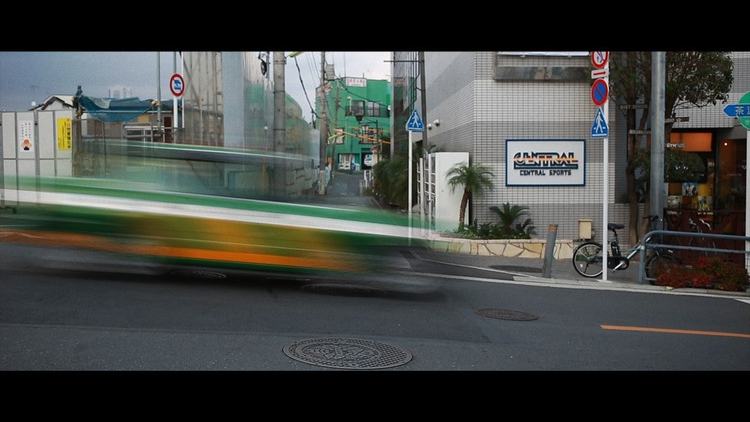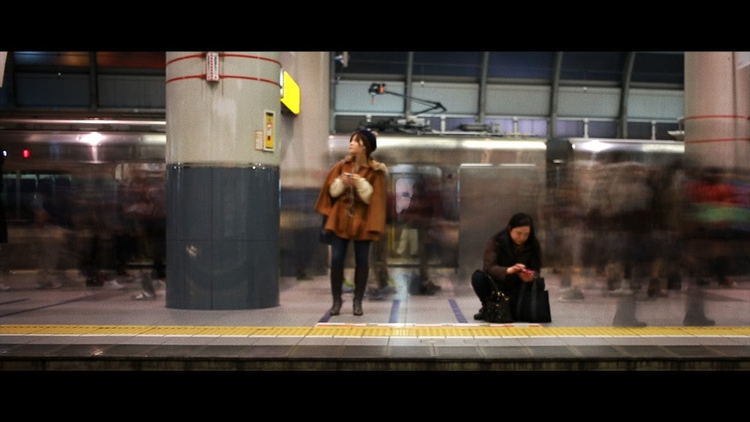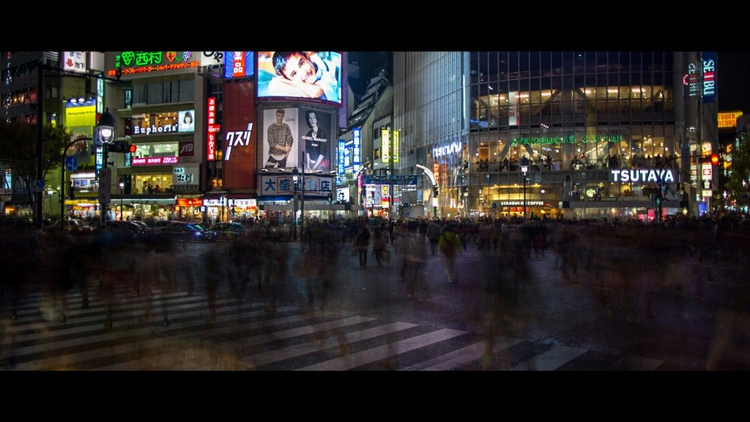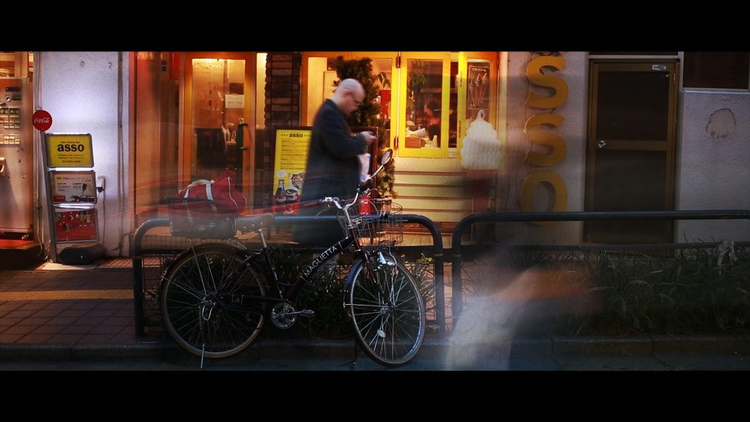Behind IN MOTION with Aaron Grimes

You may not yet have heard of talented young photographer Aaron Grimes, but you’re about to. Though he’s traveled and worked with our very own Russell Brown, most notably on their short film Bodie – from the Sky, there’s no doubt that Aaron has a talent all his own. On a recent trip to Tokyo, Japan, Aaron captured numerous shots in the Shibuya District and meticulously stacked them together using Photoshop CC to create a unique video inspired by traditional time-lapses.
//player.vimeo.com/video/83894451
In Motion from Aaron Grimes on Vimeo.
His talent is a frequent topic of conversation here in the halls of Adobe, so I wanted to sit down and chat with Aaron to give you all a behind-the-scenes look at the process he used and the story behind the video IN MOTION.
Tell us about yourself, and how you became the photographer you are today.
My name is Aaron Grimes and I’m 23 years old. I spend most of my time traveling around the western-half of the US as a freelance videographer. I started studying graphic design in school, but then my interest in film took over, so that’s what I’ve been pursing for the last three years.
I’m fascinated by the concept of storytelling, and film is the only artistic medium that I feel comfortable using to tell a story. I’ve always admired photographers and illustrators that can tell a story with one image, but I need the luxury of using lots of images every second – so film it is! A huge influence of course is my dad, Joel Grimes. He’s always inspired and encouraged me.
What was the message you wanted to convey with IN MOTION?
With IN MOTION I wanted to make a busy, crowded scene seem manageable and relaxed. While a time-lapse of a subway platform can look cool, it speeds up everything and the people in it look like insects rushing from one place to another. It almost amplifies the stress of the city. Instead, I went the other direction and toned down the stress of a crowded scene. My favorite side effect of this technique is that when people stop moving, they immediately stand out, giving the viewer something to relate to.

http://blogs.adobe.com/photoshopdotcom/files/2014/04/InMotion05.jpg
What made Tokyo different than other cities you’ve photographed?
Tokyo was very different from any city I’ve ever been to, much less, photograph. All of IN MOTION was shot on a single afternoon during which I went off on my own to explore. Most of our trip to Japan I just followed our group, so when I broke off I had no idea where to go and the language barrier was huge. I spent over an hour trying to find somewhere to withdraw money for the train.
I had several ideas of shots that I wanted, so I would walk around until I saw something that fit. For example, the shot of a train rolling to a stop and people pouring out had been with me for months. I filmed several train platforms, but when that girl came and stood still right in front of my camera, that’s when I knew that I had gotten the one.

http://blogs.adobe.com/photoshopdotcom/files/2014/04/InMotion02.jpg
Are there any other shots you knew you wanted to get ahead of time?
I knew I wanted to film Shibuya Crossing, which ended up being the closing shot of IN MOTION, but there were several others that I wasn’t able to get. I’d like to apply this effect to shots of a carousel in motion with people around it, someone feeding pigeons in the park, and maybe a bike slowly rolling across the frame. Mostly these were ideas that didn’t relate to the city of Tokyo, so it makes sense that I couldn’t find them. I’d also love to play with how this effect treats grass moving in the wind and what different water scenarios look like.

http://blogs.adobe.com/photoshopdotcom/files/2014/04/InMotion08.jpg
Can you explain the process of working with stacked images in Photoshop CC to make this video happen?
I started playing with stack modes about two years ago after I saw several of Russell Brown’s demos. Long exposure photography has always interested me; the idea of compressing time into a single image is so weird and cool. From one of Russell’s demos I got the idea to combine shorter shutter speeds to simulate longer ones, but I shelved the process to focus my efforts more on film instead of photography. I would take these long exposures, but I really wanted them to MOVE – to see the lights streak across the frame. At the time I knew what I wanted, but I didn’t know that stacking images would be the solution.
After a lot of experimenting, I brought in a video file as individual layers in Photoshop and stacked them together using the “mean” option. The effect was exactly what I wanted: all the motion blurred together. The more frames I stacked, the more it blurred. From there, I realized that if I staggered the effect by overlapping frames (for example: 1-24, 2-25, 3-26, etc.), then stacked those, and played it back, I would get the motion that I’ve always wanted.
How long did the process take? Was it worth the time?
At first, it took forever. Looking back it’s almost embarrassing how much time I spent. I exported all the video files out as image sequences and then went frame-by-frame stacking 24 images at time. It was excruciatingly slow and I couldn’t even see the final result until hours of work went by. It was a little like editing in the dark.
Even with the long hours, it was absolutely worth the time because now I can play a video of what originally was only an idea in my head. I finally have a visual representation so I don’t have to explain it anymore.
I’m actually working with the amazing Jeff Tranberry and Alan Erickson to set up a script so that you can push a button to get the same effect. It will be available for download soon, making the whole process a lot easier to do.

http://blogs.adobe.com/photoshopdotcom/files/2014/04/InMotion06.jpg
How do you learn to use new features in Photoshop?
I mostly learn new features through other photographers, either in person or on the Internet. Last year I attended AdobeMAX and learned so much just by watching demos. I always try to watch as many tutorials as I can, even if the subject doesn’t necessarily apply to my interests. What I love about Photoshop is that as I learn more, I can combine different techniques to get something new. You never know what something will look like until you try it.
You use a lot of music from Standby Red 5 – what’s the significance there?
They’re a band from the town I grew up in: Tucson, Arizona. One of my first projects ever was to shoot a music video for them…I’m friends with all the guys in the band. Their music is amazing and I’m really lucky they’ve let me use it for some of my projects. You can check them out here.
What are your ambitions? Any plans for the future?
What got me into film in the first place was my passion for storytelling, and that’s what I plan to pursue in the future. My goal is to eventually work in feature films as a Writer/Director. I have a long way to go and a lot of work to do, but that’s my plan!
Thanks to Aaron Grimes for answering our questions. I, for one, can’t wait to see him push more boundaries in the future.